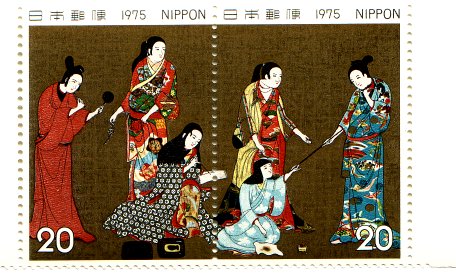
Japan in November
Culture Day
In 1946 on this day the present Constitution of Japan was officially announced. It became a holiday starting in 1948.
It is a time to honor those who have made significant contributions towards peace and freedom or in academic or cultural pursuits. At the Imperial Palace in Tokyo there is a ceremony called the Order of Culture Awards ceremony. During this the Emperor hands out awards (in the shape of an orange plant with a light purple cord) to the winners.
Festivals are held around the country to promote the arts with awards given by various public and private organizations.
Shichi-go-san
This is also referred to as 7-5-3. This is day of prayer for the healthy growth of young children.
Boys and girls aged three, boys aged five, and girls aged seven visit a Shinto shrine with their parents, the girls wearing kimonos and the boys haori jackets and hakama trousers, although more and more western-style clothes are being worn.
After the visit to the shrine parents buy chitose-ame, or "longevity candy" for the children. The candy has a stick shape and comes in a bag decorated with illustrations of cranes and turtles, animals symbolic of long life.
Labor Thanksgiving Day
This is another recent holiday, starting in 1948, as a day for people to express gratitude to one another for work done throughout the year. The day, though, is based on the foundations of a much older holiday, the Niinamesai or harvest festival during which the Emperor offered freshly harvested rice to the gods and the ate some himself.
That particular festival has been traced as far back as the year 678.

|